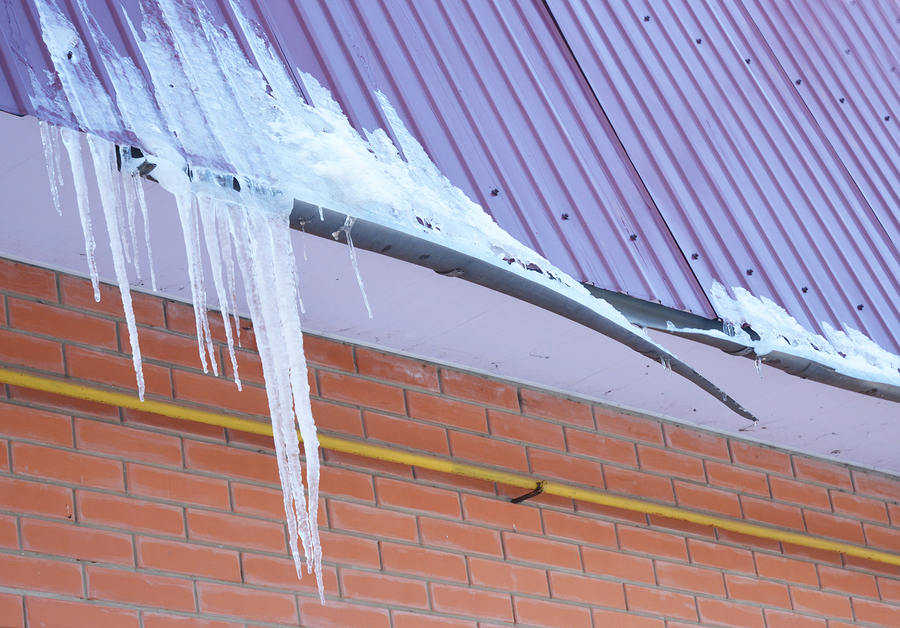If you’re considering which option is better, snow melting mats or a heated driveway, then you already understand the appeal of either of these compared to the alternatives. Both are effective in maintaining a snow-free driveway and eliminating issues such as damage from rock salt, the maintenance involved with constant application of de-icers, the strain and potential hazards of shoveling snow, or the ongoing cost and potential damage to your property with methods such as snow plowing.
While both heated snow melting mats and heated driveways are effective, they differ in other aspects that are definitely worth considering. In order to make the best, most informed choice, let’s take a look at each of these options.
Heated Driveway Pros and Cons
Heated driveways involve systems that are embedded into its pavement. They are powered by a heating element that distributes heat throughout the driveway from approximately two inches below its surface.
There are two types of heated driveways, electric coil and hydronic. The first uses electrically charged metal coils, and the latter pumps a heated water and antifreeze solution through plastic tubing. Hydronic systems are more costly to install, and electric systems cost more to operate.
Heated driveway pros
- Effective and easy. As stated previously, heated driveways are effective and will maintain a snow-free driveway with practically no effort aside from programming a sensor or manually turning the system on and off.
- No maintenance required. Once a heated driveway has been installed, there’s no ongoing maintenance necessary. A heated driveway also eliminates the ongoing costs involved with buying de-icers or paying for snow-removal services.
- Avoids damage. Installing a heated driveway means avoiding other potentially damaging methods, such as spreading rock salt or using a snow plow. It also means avoiding damage to yourself by eliminating the potential hazards of shoveling snow or the risk of liability when someone else does the shoveling.
Heated driveway cons
- Expensive to install. Installing a heated driveway can cost anywhere from $5,000 to $10,000 or more.
- A major project. Unless it’s a brand-new driveway, installing a heated driveway typically involves tearing up the existing one, which likely will incur demolition costs, and pouring a new driveway. While there are ways around completely tearing up a driveway to install a heating system, warranties are often only applicable to systems installed in new pavement.
- Repairs can be costly. While heated driveways require little to no maintenance, if something goes wrong with the system, such as a wire shorting out or tubes puncturing, repairs involve tearing up pavement to access the system, which can be expensive.
- Operating costs can be significant. While the numbers vary from region to region, heated driveways incur an operating cost that is unattractive to many homeowners, ranging up into hundreds of dollars per winter.
Heated Snow Melting Mats Pros and Con
Heated driveway mats are made from special thermoplastics and use an internal electric element to distribute heat evenly. They maintain an average temperature of 40 degrees above the ambient temperature and can melt snow at a rate of about two inches per hour.
Heated snow melting mat pros
- Effective and easy. Like heated driveways, heated driveway mats are effective at maintaining a snow-free surface. They are designed to stay outdoors all winter long and can be operated manually with a temperature sensing control or remotely.
- Easy installation. Heated snow melting mats simply need to be placed and plugged in and can easily be moved if needed. The initial investment in these mats is also fairly minimal in comparison to the high cost of installing a heated driveway.
-
Low maintenance. These mats are made from durable rubber that is designed to be driven on. Like heated driveways, they also eliminate the need for ongoing snow removal services or application of de-icers.
- Improved safety. The surface of heated driveway mats improves traction and safety with tread. They also eliminate the need for potentially unsafe activities like shoveling snow or having to be in the cold outdoors applying de-icers.
- Cost efficient to operate. Heated driveway mats are made to meet the highest electrical standards and as a result are not only safe, but are cost-efficient and average about $1 per day to operate.
Heated snow melting mat con
- You’ll want to use them everywhere. Heated snow melting mats aren’t just for the driveway, they’re made for stairs, walkways and entrances, also. Once you’ve experienced the ease and effectiveness of using these mats you’ll want to use them for your main snow-removal method everywhere you can.
Given that heated driveways and heated snow melting mats both provide some pretty major “pros,” it would seem that the differentiating factors between them are cost and ease of installation, as well as ongoing operating and potential maintenance costs. In this context, heated driveway mats are a clear winner when it comes to maintaining the safety and accessibility of your driveway this winter.


